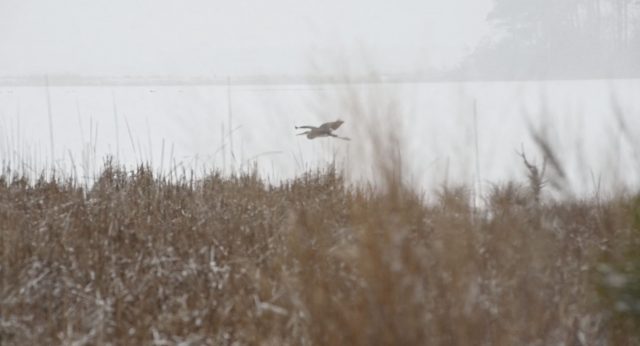Somehow they know it’s time. Towards the end of summer, the small changes in daylight signal rituals of preparation. They flock together, watching and waiting. One morning the marsh is full of birds hunting and preening, and the next morning, usually after a strong north wind, they’re gone, those same tidal ponds eerily empty.

Yet, thankfully, not all birds desert our beaches and inland bays. Throughout the winter, besides the short-lived migrations of northern birds passing through, we have hardy, year-round residents. Instead of following food sources south, they’ve figured out ways to hunt, forage, and survive in the worst of weather.
One of our largest avian year-round residents is the wild turkey. They roam in flocks and when you see them run across the road or a field, it is impossible not to smile and maybe giggle. Even though their legs are strong and they can reach speeds of 25 mph, something about their ungainly stride is funny—like plump church ladies who’ve hitched up their skirts and are running to save a batch of cookies from over-baking. And their call is funny too. Their unmistakable “gobble-gobbly-gobbly-gobble,” (which can travel up to a mile) sounds like a reunion of best friends, everyone catching up, gabbing, and laughing. I agree with Benjamin Franklin that the Wild Turkey would have been a wonderful national emblem.
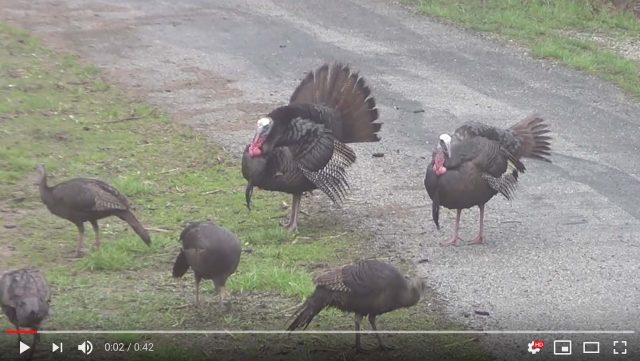
Speaking of national symbols, Bald Eagles are another year-round resident of our inland bays. While eagles of the same latitude further west tend to migrate, along the coasts they stick around. They nest near the water and a good place to see them is the Assawoman Wildlife Area. But also, this time of year with most of the fields harvested, you’ll often see Bald Eagles scavenging carrion along roadsides. This, of course, isn’t as awe-inspiring as spotting one perched on the outstretched branch of a tall loblolly pine—solitary, brooding, cranky, unapproachable—like your neighbor down the street who’s always angry about something. The Bald Eagle’s favorite meal is fish. While they will hunt for them, the opportunistic raptor is just as likely to steal a freshly-caught fish from an Osprey. And they are not too proud to feed on something nice and stinky along the road or to even pick through a trash heap. They mate for life and the oldest known wild Bald Eagle lived to be 38 years old.
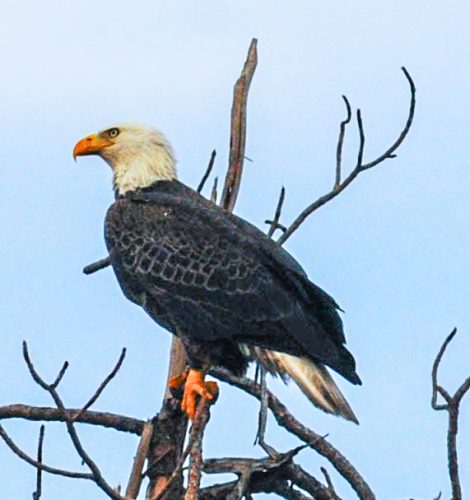
Great Blue Herons are another large bird that we see here throughout the off-season even though they seem like a bird that should fly south. Everyone else in their species clears out for the winter. Green Herons, Black-Crowned Night Herons, Tri-Colored Herons, Snowy Egrets, Great Egrets—they all leave in early September. Maybe the Great Blues appreciate having the marsh all to themselves. They are solitary to begin with. They hunt alone, fly alone. During breeding season they nest in rookeries with hundreds of other Great Blues. But otherwise, you never see two of them hanging out together. So maybe they look forward to the extra breathing room of the off-season like human year-round coastal residents do.
Wise or not, owls still stick around all winter long. As night hunters, it is hard to spot them. Sometimes at dusk, in your peripheral vision, you’ll see a large, dark form shoot past but when you turn to get a look, it has disappeared. Their feather patterns camouflage them so well that they seem to melt into their surroundings. But you can hear them. Great Horned Owls make the “who-who-who” sound that you expect to hear from an owl. The Barred Owl makes the “Who-cooks-for-you? Who-cooks-for-you-all?” call. And the cute little Eastern Screech Owl has an eerie call that sounds like the whinny from the Headless Horseman’s mount.
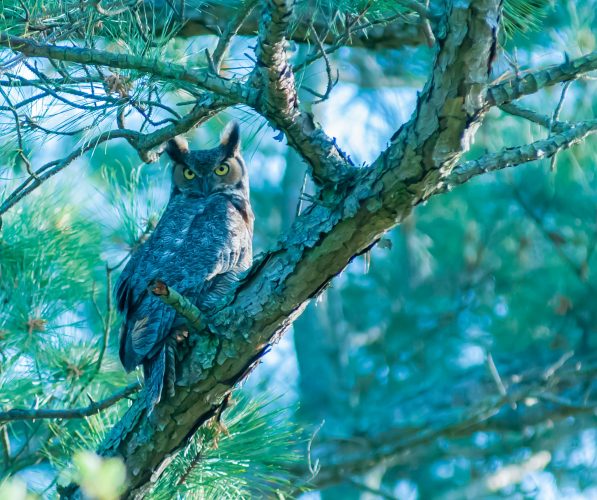
Great Horned Owl
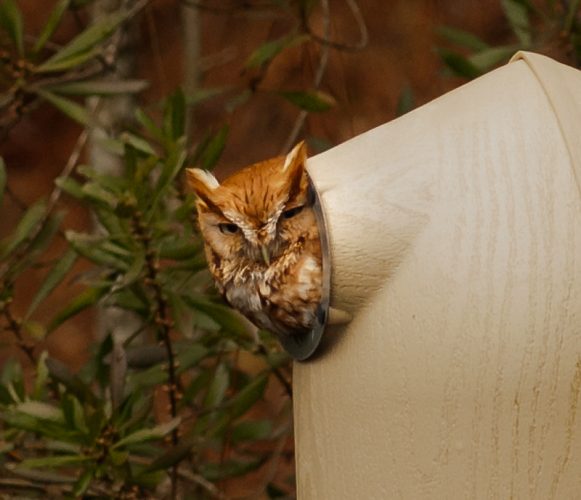
Eastern Screech Owl
Then we have the small birds that give the bleak winter landscape a welcome pop of color. Cardinals, Blue Jays, and Chickadees are a few that will forage for nuts and berries and fill-up at bird feeders all season long. Seeing a vivid male Cardinal sitting in the midst of naked tree branches on a day where everything else is gray makes your eyes do a happy dance.
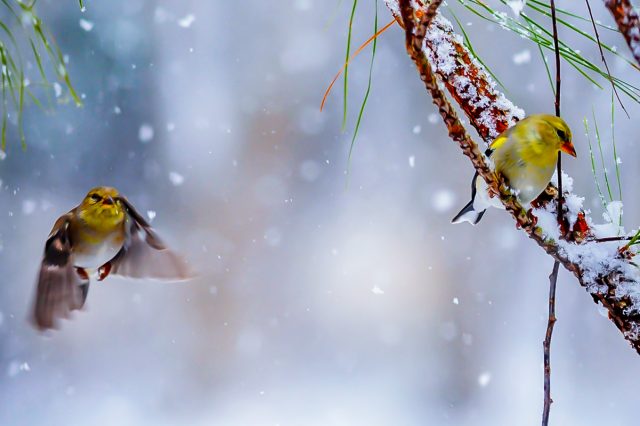
Blue Winged Warbler
This list only hints at all the bird life that toughs it out with us during the off-season. So this winter, even on the coldest days, if you make the effort to get outside, you’ll have plenty of winged company.
by Jenifer Adams-Mitchell
photos (except wild turkey video) by Mitch Mitchell
Facts for this post came from:
https://www.thespruce.com/fun-facts-about-wild-turkeys-387112
https://www.allaboutbirds.org/guide/Great_Blue_Heron/lifehistory
AllAboutBirds.org
https://www.audubon.org/news/birdist-rule-10-know-what-birds-are-doing-each-month
https://www.post-gazette.com/life/outdoors/2007/02/11/Wildlife-Some-blue-herons-will-weather-the-winter/stories/200702110200
https://owlcation.com/stem/Why-Some-Birds-Fly-South-for-the-Winter-and-Others-Do-Not

